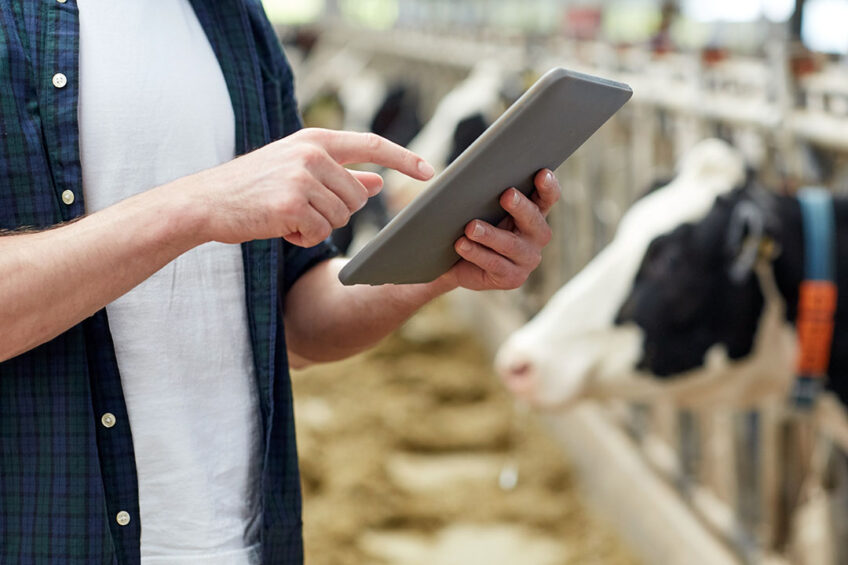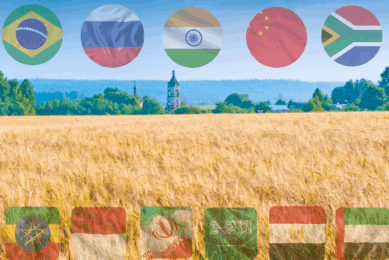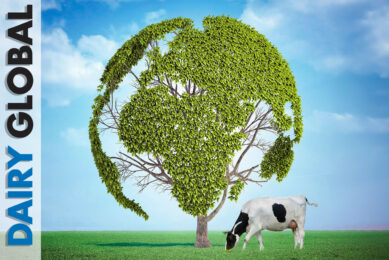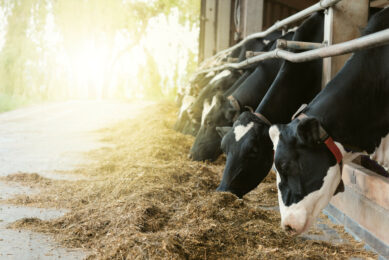Dairy farming and partnering with AI systems

Discerning accurate information about artificial intelligence in agriculture is very important, as is an examination of actual uses.
First of all, let’s define artificial intelligence (AI, which usually stands for artificial insemination in dairy circles). AI is the ability of software to solve problems and perform tasks that otherwise require human intelligence. A common, well-established application of AI is identifying ‘normal’ or expected shapes, colours, patterns and so on, and also therefore detecting deviances from these norms.

Already, AI in robotic milking systems decides if a cow should be milked or not at a given time and reports to the farmer about disruptions to normal feeding patterns, milk quality and more. Some dairy farmers are now also using virtual fence systems, similar to technologies for pet dogs, where AI manages the movement of pastured cows to optimise pasture use. The cows wear GPS-enabled collars which move them along with beeps or mild electrical pulse as needed to optimise pasture use. (Read about virtual fencing systems developed in the UK, Australia and WUR University in the Dairy Global story here).
Here is another dairy farming example. Back in 2017, Professor Yago Yasushi at Osaka University in Japan developed an AI system to detect laminitis, digital dermatitis, and other issues through analysing a dairy cow’s gait (however, the system does not appear to be commercialised). The farmer points a hand-held scanner towards a given cow, and the software identifies anything about the gait that falls outside of normal bounds, and which therefore may signify disease. The software first ‘learned’ what a normal gait looks like through exposure to large amounts of data (in this case, video of cows walking normally). It is reported to have almost a 100% accuracy rate in detecting abnormalities.
 AI recognition technology to boost cow health
AI recognition technology to boost cow health
A project is underway to create an Artificial Intelligence-based system that can recognise a cow by its skin patterns to boost cow health and productivity.
Broader services
Of course, AI is planned to provide much broader services on a farm, a partner that helps farmers protect cow health, boost milk production and improve farm productivity, note researchers in India, who in 2019 published a paper called Artificial Intelligence in Dairy Farming: A Way Forward for Improving the Health of Dairy-Cows. “Eventually, it will provide new hope and open prospects for…progress in the dairy industry,” state these scientists, “through a profitable business approach.”
Performance information on individual cows and at the herd level (milk yield, disease incidence, feed intake for example) is obviously best combined with other sources of data such as weather conditions to provide guidance for continuous improvement of management practices and data-driven decisions.
 Deep learning for efficient dairy farming
Deep learning for efficient dairy farming
CattleEye is on a mission to create the world’s first autonomous livestock monitoring platform. CEO and co-founder Terry Canning tells us more.
For example, Australian researchers recently reported on how AI can automatically adjust the ambient temperature for dairy cows in a barn, or otherwise increase their heat loss when heat stress is a concern. These scientists propose a system for robotic dairies based on an individual cow assessment combined with weather data that can be easily connected to a smartphone app. “The model outputs can be automatically set to specific thresholds for volume and milk quality [and] the system can then automatically control gates to direct individual cows either to a cooling system with water sprinklers or to normal milking sections,” the scientists explain. This team believes AI systems can be implemented with reasonable investment by small and medium dairy farmers.
 Cainthus reveals bespoke feed technology
Cainthus reveals bespoke feed technology
Cainthus has revealed its first product: ALUS Nutrition. The product offers bespoke technology that monitors feed 24/7 using a smart camera system.
Cainthus of Ireland (see recent Dairy Global story here) has developed a system that uses AI to identify and track behaviour of all the cows in the barn. The data is used to create performance indicators for the cows and farm (related to productivity, welfare and more), with real-time analysis available on the farmer’s smart phone. On one Canadian farm, this system showed that the cows were, for some reason, taking very short drinks which would have soon impacted on their milk production and health. Because of the systems, the farmer investigated and found there was a stray electric current running through the water.
 Interview with Cainthus CEO: Feed tech zooms in on each cow
Interview with Cainthus CEO: Feed tech zooms in on each cow
Dublin-based agtech firm Cainthus, founded in 2016, recently launched its bespoke feed technology that can monitor cows in real time, 24/7.
AI can also be used for breeding; the software can use data on milk production, feed intake and so on to provide recommendations on breeding decisions. In addition, to provide detailed information to the consumer on dairy products and ensuring their safety and quality, scientists from Spain and Panama recently presented an Intelligent Edge-IoT (Internet of Things) platform for monitoring livestock and crops in a dairy farming scenario. AI can be used, the researchers say, to help the dairy industry make the required adaptations “to the current market by becoming more resource efficient, environment-friendly, transparent, and secure.”
Dr Marianne Cockburn, in a recent paper reviewing AI studies in the last 5 years, notes that AI can also be used to integrate the large amount of data generated on dairy farms – and that currently, this lack of integration means that low longevity, poor performance, and health issues still persist. However, during a recent symposium on AI within the food system hosted by University of Florida (UF), Dr Jeffrey Bewley at Holstein USA cautions that ownership of data generated on-farm is a concern that must be addressed.
In her session, Dr Lauri Baker, associate professor of agricultural communication at the University of Florida, reported on research involving data analysis by a software system called ‘MotivBase.’ The software searched online discussions worldwide October 2019 to September 2020 (using the terms ‘artificial intelligence’ and ‘food system’) and analysed them, concluding that about 11% of those taking part in these discussions considered themselves aware of AI within the food system. “Greater awareness will likely grow rapidly in the near future,” Baker explains.
 AI technology reduces antibiotic treatment in dairy cows
AI technology reduces antibiotic treatment in dairy cows
Detecting the early signs of sickness as well as quick recovery of cows is key for animal health, welfare and a reduction of antibiotics.
She notes that there are concerns in the discussions relating to AI in the food system, for example that it may cause unemployment or perhaps allow agri-food systems to become more intensive. “I think there also may be concerns out there specifically about AI in dairy farming that may make it harder for new entrants, that it makes getting into dairy farming too expensive,” she adds.
However, Baker notes that with regard to AI and dairy farming, most people would likely view the applications now already in use and being proposed in a positive light, as these uses are aimed at improving the comfort and health of cows and ensuring food safety. “The demand for very high levels of traceability with dairy products and all food products is growing, and without AI, we will not be able to achieve the levels of food system traceability that are desired by consumers,” she notes. “In addition, we have to remember that none of these AI systems in dairy farming operate completely without human decision-making at some level.”
Join 13,000+ subscribers
Subscribe to our newsletter to stay updated about all the need-to-know content in the dairy sector, two times a week.










